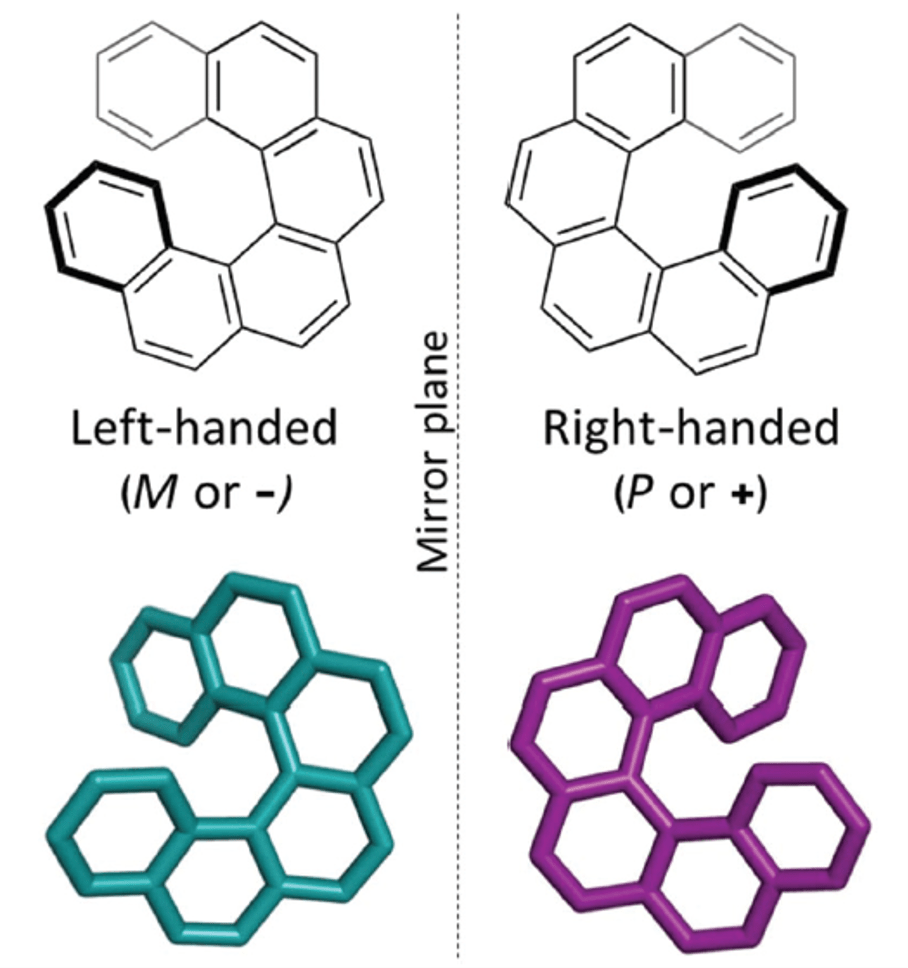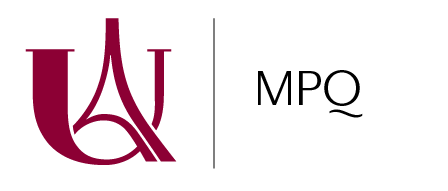Laboratoire: MPQ (Matériaux et Phénomènes Quantiques), Université Paris Cité & CNRS
Adresse: Bâtiment Condorcet – 10 Rue A. Domon et L. Duquet – 75013 Paris
Directeur de stage/thèse: Amandine Bellec
Tel: 0157276290
e-mail: amandine.bellec@u-paris.fr
Scientific project:
Chiral molecules are present in the form of two non-superimposable enantiomers due to the absence of inversion center (figure 1). They then offer the unique possibility of being able to create spin selectivity at the interface with a metal. This effect, known as the CISS (chiral induced spin-selectivity) effect, was demonstrated in the early 2000s on monolayers of lysine molecules, long carbon chains, adsorbed on Au [1]. But, the origin of this effect is still widely debated [2]. Experimentally, the CISS effect brings together all the phenomena for which the chirality of molecular species influences the spin selectivity of various electronic processes, whether for transmitted electrons [3,4], for transport measurements [5] or even during chemical reactions. To illustrate this last point, studies have been able to demonstrate enantio-selectivity during the adsorption of chiral molecules on magnetic substrates: depending on the orientation of the magnetization, an enantiomer is preferentially adsorbed [6].
In this context, the internship will focus on the interfaces between chiral molecules and metallic or ferromagnetic substrates in order to understand their properties. For this, measurements by scanning tunneling microscopy (STM) will be carried out. For the structural properties, it will be important to understand how chiral molecules adsorb on different metallic substrates. Furthermore, tunneling spectroscopy will provide access to the electronic properties of molecules and it will then be interesting to understand how the CISS effect translates into transport through molecular orbitals, before testing the spin selectivity.
[1] Ray et al., Science 283, 814-816 (1999).
[2] Evers el al., Advanced Materials, 2106629 (2022).
[3] Göhler et al., Science 331, 894-897 (2011).
[4] Kettner et al., The Journal of Physical Chemistry Letters 9, 2025-2030 (2018).
[5] Rodríguez et al., J. Am. Chem. Soc. 144, 24 (2022).
[6] Banerjee-Ghosh et al., Science 360, 1331-1334 (2018).
Methods and techniques: Scanning tunneling microscopy
Possibility to go on with a PhD: YES
Envisaged fellowship: Doctoral School

Figure 1 : Scheme of [6]-helicene molecules
À lire aussi

TUPHO, for large-scale production of integrated photonic circuits
The TUPHO project is an initiative that aims to bridge the gap between upstream innovation and large-scale production in the integrated photonic circuits (PICs) industry. It is led by Hamidreza Neshasteh and Ivan Favero, members of the Light and Mechanics team at MPQ...

Towards light control of van der Waals magnets
Laboratoire: MPQ (Matériaux et Phénomènes Quantiques), Université Paris Cité & CNRS Adress: Bâtiment Condorcet – 10 Rue A. Domon et L. Duquet – 75013 Paris Internship/PhD supervisor: Niloufar Nilforoushan and Yann Gallais Tel: 0157276223 e-mail:...

Seminars
Prof. Sebastian Loth — University of Stuttgart, Institute for Functional Matter and Quantum TechnologiesTitle: Coming soon16 Janvier 2026 à 11h00 — Salle Luc Valentin (454A) Dr. Florian Dirnberger — Department of Physics, TUM School of Natural Sciences, Technical...

On-Chip Ferromagnetic Resonance for van der Waals Heterostructures: Anisotropy and Damping of Cobalt Interfaced with Exfoliated 2D Materials
A collaboration between the technical hub, the clean room platform and the TELEM group at MPQ laboratory has developped a new experiment demonstrating that standard broadband ferromagnetic resonance can still be effective to probe the magnetization dynamics of “thin...
